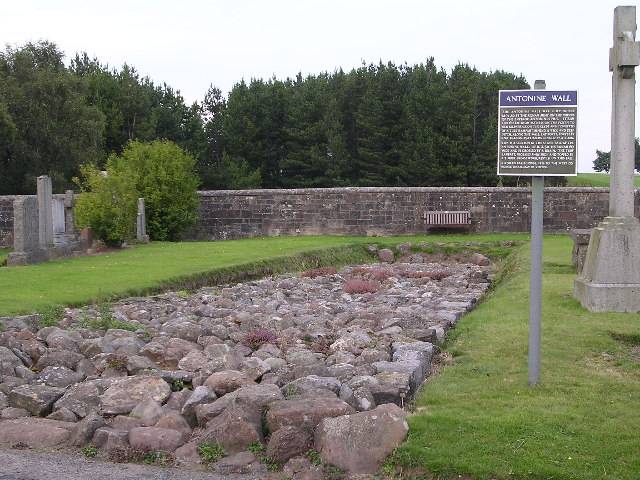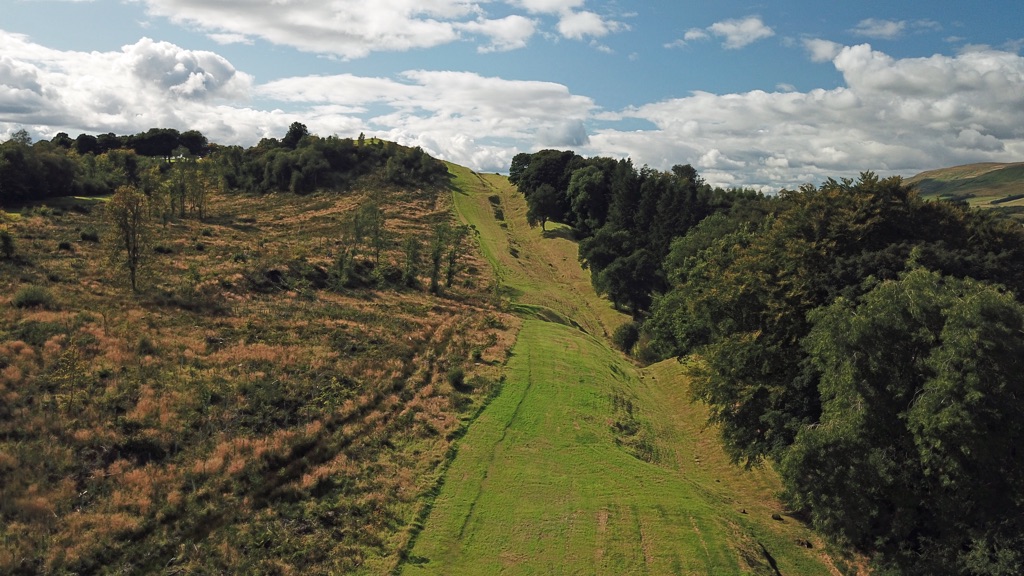The Antonine Wall, once a formidable frontier constructed by the Romans, marked the northernmost reach of their empire in Britain. Built on the orders of Emperor Antoninus Pius in the 2nd century AD, it spanned approximately 63 kilometers across the width of modern-day Scotland. The wall served as a physical and symbolic barrier, delineating Roman territory from that of the unconquered Caledonian tribes. Despite its impressive scale, the Antonine Wall was occupied for only about two decades before the Romans retreated to the more established Hadrian’s Wall to the south. Today, it stands as a testament to the Roman Empire’s vast reach and its enduring impact on British history.
Get your dose of History via Email
Historical Background of The Antonine Wall
The Antonine Wall was discovered through a combination of early modern antiquarianism and archaeological investigation. Its existence was known from Roman texts, but the wall’s precise location and structure were brought to light over time. The Romans, under the direction of Emperor Antoninus Pius, built the wall starting around AD 142. It was a display of Roman power and a means to control the northern frontiers of Britannia.
Unlike Hadrian’s Wall to the south, the Antonine Wall was constructed mainly of turf on a stone foundation. It stretched from the Firth of Forth to the Firth of Clyde. The wall was part of a larger defense system that included forts, fortlets, and a ditch to the north. It represented the edge of the Roman Empire for about 20 years before they abandoned it around AD 162.
After the Romans, the wall did not serve as a significant political boundary. However, it remained a part of the landscape. Over the centuries, stone from the wall was repurposed for various local construction projects. The wall’s history was not the scene of major battles in later periods, but it has been a source of archaeological interest and national pride.
Archaeological excavations have revealed much about the wall’s construction and the life of the soldiers stationed there. These findings have provided insight into the Roman Empire’s reach into Scotland. The wall’s forts and artifacts have been crucial in understanding the Roman military and their interactions with the local populations.
The Antonine Wall’s significance lies not only in its historical role but also in its symbolism. It represents the fluctuating northern boundary of Roman Britain. Today, it is a UNESCO World Heritage Site, recognized for its historical importance and the light it sheds on Roman frontier policy.

About The Antonine Wall
The Antonine Wall was a marvel of Roman engineering, primarily built using turf and wood on a stone base. The wall itself stood about 3 meters high and 5 meters wide, with a large ditch on the northern side. The Romans designed the wall to be a formidable obstacle, complete with ramparts and fortifications.
Along the wall, the Romans constructed a series of forts approximately every 2 kilometers. These forts varied in size and complexity, often including barracks, headquarters, and bathhouses. The largest of these was Rough Castle, which showcased sophisticated defense mechanisms, including lilia pits.
The construction of the Antonine Wall required a massive logistical effort. The Romans used local resources, such as turf and timber, and transported stone from quarries. The wall’s builders were likely the legions stationed in Britain, along with auxiliary forces.
Architectural highlights of the wall include the remains of the fort at Bearsden, where a well-preserved bathhouse and latrine have been excavated. These structures offer a glimpse into the daily lives of Roman soldiers far from home.
Despite its impressive construction, the Antonine Wall was not a permanent fixture. The Romans abandoned it in favor of Hadrian’s Wall to the south, which was more robust and easier to defend. The Antonine Wall’s remains, however, continue to intrigue historians and visitors alike.
Theories and Interpretations
The purpose of the Antonine Wall has been the subject of various theories. While its primary function was defensive, some historians suggest it also served as a customs post to control trade and movement between the Roman and Caledonian territories.
Mysteries surround the wall, particularly regarding the reasons for its construction and abrupt abandonment. Some theories propose that it was built as a political statement by Emperor Antoninus Pius, who sought to leave his mark on the empire.
Interpretations of the wall’s significance have evolved over time. Initially seen as a military failure due to its short use, it is now recognized as a complex symbol of Roman strategy and adaptation to local conditions.
Archaeological dating of the wall has employed various methods, including dendrochronology and radiocarbon dating. These techniques have helped confirm the timeline of its construction and use.
The wall’s inscriptions and sculptures have provided valuable information about the Roman units stationed there and their origins. These artifacts have been matched to historical records, offering a more complete picture of the Roman army’s composition in Britain.
At a glance
Country: Scotland, United Kingdom
Civilization: Roman Empire
Age: Constructed around AD 142
Conclusion and Sources
Reputable sources used in creating this article include:
- Wikipedia – https://en.wikipedia.org/wiki/Antonine_Wall
- UNESCO – https://whc.unesco.org/en/list/430

